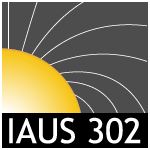With the precise, nearly-continuous photometry from the Kepler satellite and the sub-milliarcsecond resolving capabilities of the CHARA Array, astronomy is entering a new age for the imaging and understanding of stellar magnetic activity. We present first results from our Guest Observer Program, where 180 single-epoch surface image reconstructions of KIC 5110407 have revealed differential rotation and hints of magnetic activity cycles based on both spot and flare variations. Analysis of our larger dataset will establish in unprecedented detail the relations between stellar age and spectral type on surface magnetic activity. In addition to Kepler work, we have harnessed the power of the world's largest infrared interferometer to "directly" image the spotted surfaces of the few closest RS CVn systems, allowing a comparison of contemporaneous Doppler and light-curve inversion imaging techniques.

 PDF version
PDF version
